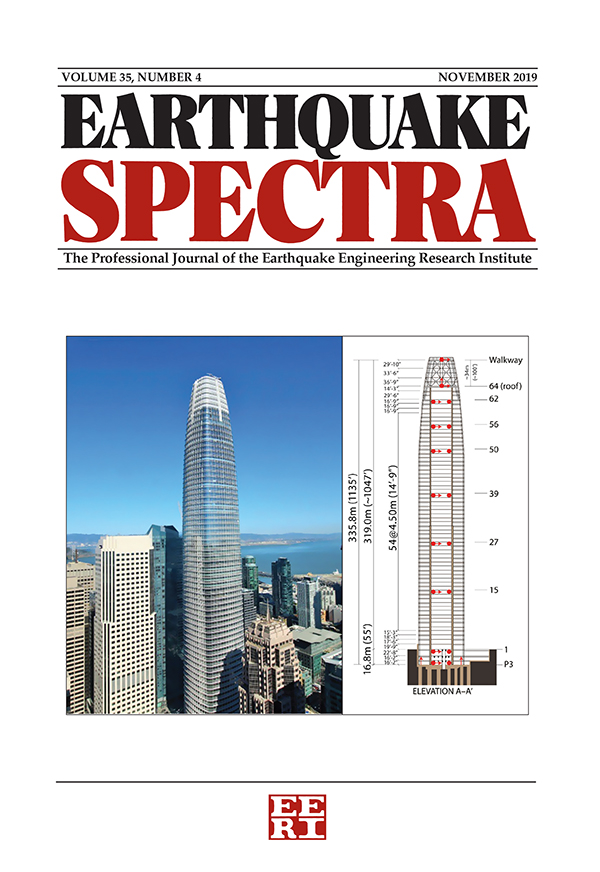“We ran outside and waited for it to come”: Resident experiences in response to a false earthquake early warning
IF 3.7
2区 工程技术
Q2 ENGINEERING, CIVIL
引用次数: 0
Abstract
Ridgecrest, CA, experienced the Searles Valley earthquake sequence in 2019 and a “false” earthquake alert in 2020, providing a unique opportunity to examine the effects of earthquake experience on future responses to informational cues to action (i.e., earthquake alert), as well as reactions to a “false” alert. We conducted in-depth interviews with 41 residents using the protective action decision-making model as a theoretical framework. Interviewees reported a variety of environmental cues that signaled the onset of an earthquake, including sensing a foreshock, hearing the earth rumble, hearing objects fall to the floor and break, and observing unusual animal behavior. Fewer individuals received social cues to action. More individuals reported performing “drop, cover, and hold on,” and fewer reported standing in a doorway in response to the 2020 alert than had done so in the prior 2019 earthquake. Several respondents reported maintaining protective actions well after the “false” alert was issued, and many waited more than 5 min before determining there was no threat present. Prior experience of the 2019 earthquake series affected perceptions of the earthquake alert and what actions to take; however, there was limited knowledge of how the ShakeAlert system worked to monitor, detect, and model earthquakes via earthquake early warning to persons at risk. Findings indicate there is a need for additional public education about ShakeAlert-powered earthquake early warning, including how far in advance one can expect to receive an alert, as well as the protective actions one should take and when to take them."我们跑到外面等着它来":居民应对虚假地震预警的经验
加利福尼亚州里奇奎斯特市在 2019 年经历了 Searles Valley 地震序列,并在 2020 年经历了一次 "错误 "地震警报,这为我们提供了一个独特的机会来研究地震经历对未来行动信息提示(即地震警报)的影响,以及对 "错误 "警报的反应。我们以保护性行动决策模型为理论框架,对 41 位居民进行了深入访谈。受访者报告了各种预示地震来临的环境线索,包括感觉到前震、听到大地隆隆作响、听到物体掉在地上摔碎的声音以及观察到不寻常的动物行为。收到社会行动提示的人较少。与之前的 2019 年地震相比,更多的人表示在 2020 年的警报中采取了 "放下、躲避和坚持 "的行动,而站在门口的人则更少。一些受访者称,在 "错误 "警报发出后,他们仍坚持采取保护行动,许多人在等待 5 分钟以上后才确定没有威胁。之前在 2019 年系列地震中的经历影响了人们对地震警报和采取何种行动的看法;然而,人们对 ShakeAlert 系统如何通过地震预警对处于危险中的人员进行监测、检测和地震建模的了解十分有限。研究结果表明,有必要开展更多有关 ShakeAlert 地震预警的公众教育,包括人们可以提前多久收到警报,以及应该采取的保护措施和何时采取这些措施。
本文章由计算机程序翻译,如有差异,请以英文原文为准。
求助全文
约1分钟内获得全文
求助全文
来源期刊

Earthquake Spectra
工程技术-工程:地质
CiteScore
8.40
自引率
12.00%
发文量
88
审稿时长
6-12 weeks
期刊介绍:
Earthquake Spectra, the professional peer-reviewed journal of the Earthquake Engineering Research Institute (EERI), serves as the publication of record for the development of earthquake engineering practice, earthquake codes and regulations, earthquake public policy, and earthquake investigation reports. The journal is published quarterly in both printed and online editions in February, May, August, and November, with additional special edition issues.
EERI established Earthquake Spectra with the purpose of improving the practice of earthquake hazards mitigation, preparedness, and recovery — serving the informational needs of the diverse professionals engaged in earthquake risk reduction: civil, geotechnical, mechanical, and structural engineers; geologists, seismologists, and other earth scientists; architects and city planners; public officials; social scientists; and researchers.
 求助内容:
求助内容: 应助结果提醒方式:
应助结果提醒方式:


